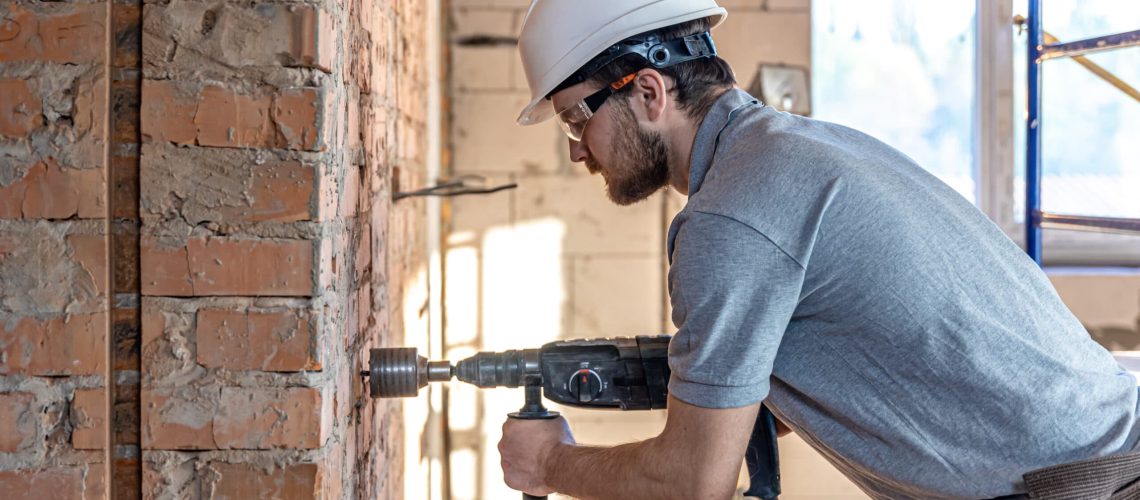Damaged walls and floors? Leaking water lines? Sticky doors? Your home’s foundation is failing, and you must act quickly to remedy the situation.
Homeowners do not relish the prospect of having to deal with issues related to their foundation. Many of them ignore the repairs for a long stretch of time, in reality. It’s reasonable that people put off dealing with this problem because it would cost a lot of money to fix. However, if you don’t begin taking measures sooner, you’ll have to fork up a large sum of money if the condition grows any worse.
In addition, the soil type, climate, the foundation itself, and any new challenges that may occur will all influence the sort of repair you require. While some foundation restoration procedures may cost more than others, their ultimate purpose is to restore the foundation to a secure structural state. Here are a few types of foundation repair to get you started:
1. Steel piers
The use of steel piers as permanent foundation restoration is strongly suggested. Steel piers are sturdy and may be pushed as far as 100 feet into the ground, ensuring a rock-solid foundation for your house. Steel piers may be pushed all the way to bedrock; thus, they are resistant to movement in expanding clay soils.
Steel piers have transformed the process of foundation rehabilitation. Many structural engineers would propose steel piers for stabilizing or fixing a foundation that needs repair or stability. Steel is an excellent choice for strengthening homes that have begun to sink or slope at an unusual angle.
2. Concrete piers
Concrete piers are often utilized during the pre-construction stage of a project, although they can also be employed for repairs. Concrete piers are custom-built to fit the soil beneath your property and the depth of the foundation. In moderate and warm climates, concrete piers is the foundation repair method of choice.
3. Helical piers
In the repair of pier and beam and lightweight concrete slab foundations, helical piers, also known as anchors, are often the best choice for the restoration. Helical piers are also utilized to anchor new foundations, in addition to foundation restoration. Helical piers are best suited for external foundation and slab repairs.
A helical pier can be utilized in situations where other approaches are ineffective. In order to transfer the weight of the structure to the load bearing earth, these piers are inserted into the ground at a specified load capacity.
4. Spot piers
Spot piers are a fantastic option for foundation restoration in places that receive little weight, such as an attached patio or an outdoor porch. Hand-digging and concrete insertion strengthen the weak or damaged parts of your foundation while installing these anchors.
5. High-density polyurethane foam
The use of high-density polyurethane foam in the event of a foundation problem is an excellent option. Being widely available and rising rapidly makes it a popular choice for raising highway concrete, concrete in residential buildings, and foundation repairs that must be completed quickly but aren’t reported. Foam made of high-density polyurethane is perfect for generating strong designs with accurate surface detail and also delivers a superior surface gloss. It’s a big hit due of its affordability and the quickness at which a foundation can be repaired.
6. Masonry patches and sealants
In some cases, a waterproof masonry sealant can be used to fill in foundational cracks. Hydraulic cement, vinyl concrete, epoxies, silicone, and polyurethane are common sealers for tiny cracks. The severity of the crack will dictate the type of solution to be utilized. This is a critical technique for repairing the foundation of a home.
Only little cracks will benefit from this, so keep an eye out for them. Doing so will help avoid additional damage to the foundation.
7. Slab jacking
Uneven or sinking concrete can be raised using the Slab jacking technique. Mud jacking, concrete lifting, and slab leveling are other names for this method. The process is fairly simple: rather than replacing your concrete, an expert drills holes in your foundation in strategic places. Then, they use small hoses to inject a mixture of grout or foam under your foundation, which helps it rise in just a couple of hours.
This method is suitable for little works like elevating steps, decks, pathways, garage floors, and roads.
8. Soil modification
Soil stabilization or modification is one of the types of foundation repair. It is a method of increasing the soil’s stiffness and stability by using various chemicals to fill holes in the soil layers. The procedure resembles slab jacking in certain ways. Users are divided on whether or not to adopt this approach because of the additional information and expertise it necessitates, as well as the requirement for an experienced guide. Also, both the cost and the maintenance are significant. This form of house foundation repair procedure is long-lasting, causes minimal structural damage, and is also ecologically friendly.
Conclusion
Keeping your house in good condition is critical to its value, and we’re sure you already know this. There are several reasons why foundation issues occur, and everyone wishes to prevent them. Prior to any serious damage, foundation issues must be addressed with the utmost care. We have compiled a list of the most common types of foundation repair procedures that are the effective in remedying such issues.


